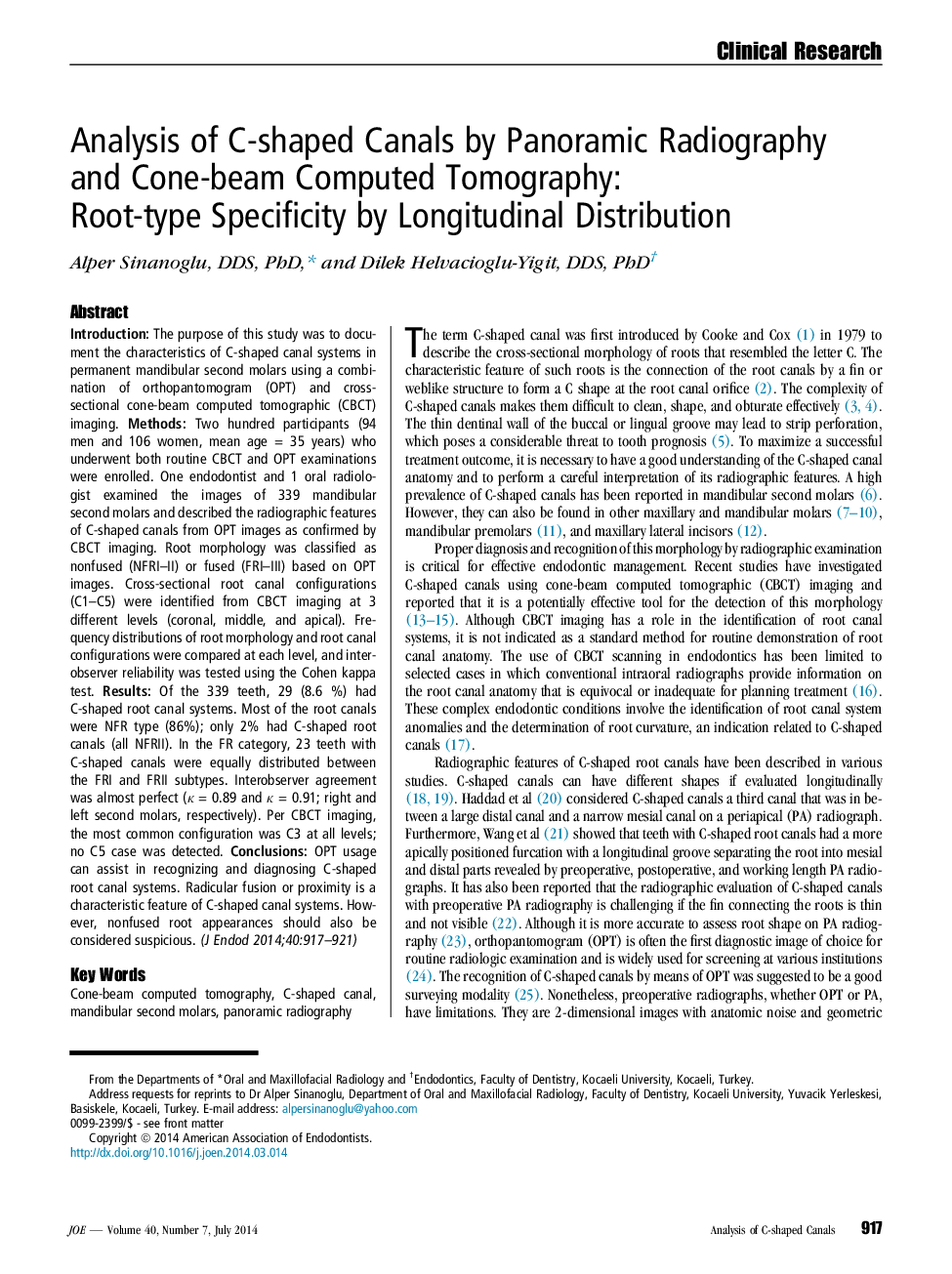| کد مقاله | کد نشریه | سال انتشار | مقاله انگلیسی | نسخه تمام متن |
|---|---|---|---|---|
| 3146809 | 1197320 | 2014 | 5 صفحه PDF | دانلود رایگان |

IntroductionThe purpose of this study was to document the characteristics of C-shaped canal systems in permanent mandibular second molars using a combination of orthopantomogram (OPT) and cross-sectional cone-beam computed tomographic (CBCT) imaging.MethodsTwo hundred participants (94 men and 106 women, mean age = 35 years) who underwent both routine CBCT and OPT examinations were enrolled. One endodontist and 1 oral radiologist examined the images of 339 mandibular second molars and described the radiographic features of C-shaped canals from OPT images as confirmed by CBCT imaging. Root morphology was classified as nonfused (NFRI–II) or fused (FRI–III) based on OPT images. Cross-sectional root canal configurations (C1–C5) were identified from CBCT imaging at 3 different levels (coronal, middle, and apical). Frequency distributions of root morphology and root canal configurations were compared at each level, and interobserver reliability was tested using the Cohen kappa test.ResultsOf the 339 teeth, 29 (8.6 %) had C-shaped root canal systems. Most of the root canals were NFR type (86%); only 2% had C-shaped root canals (all NFRII). In the FR category, 23 teeth with C-shaped canals were equally distributed between the FRI and FRII subtypes. Interobserver agreement was almost perfect (κ = 0.89 and κ = 0.91; right and left second molars, respectively). Per CBCT imaging, the most common configuration was C3 at all levels; no C5 case was detected.ConclusionsOPT usage can assist in recognizing and diagnosing C-shaped root canal systems. Radicular fusion or proximity is a characteristic feature of C-shaped canal systems. However, nonfused root appearances should also be considered suspicious.
Journal: Journal of Endodontics - Volume 40, Issue 7, July 2014, Pages 917–921